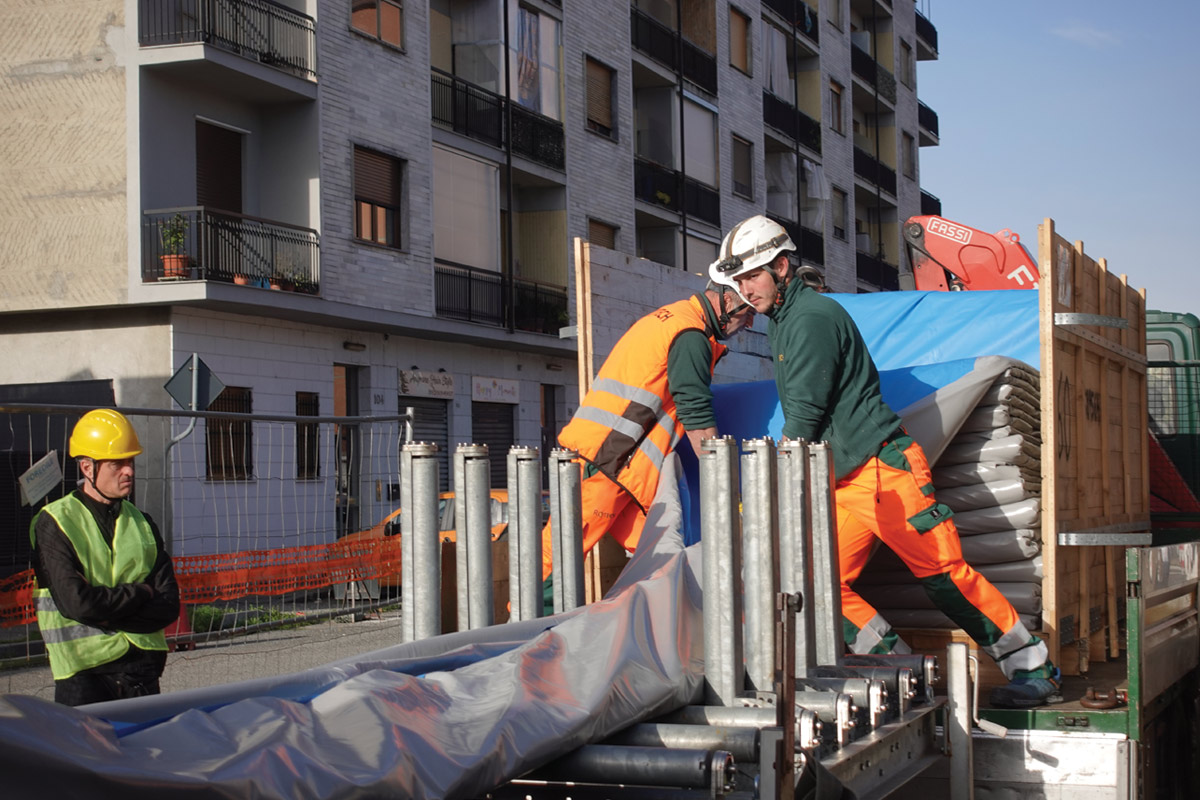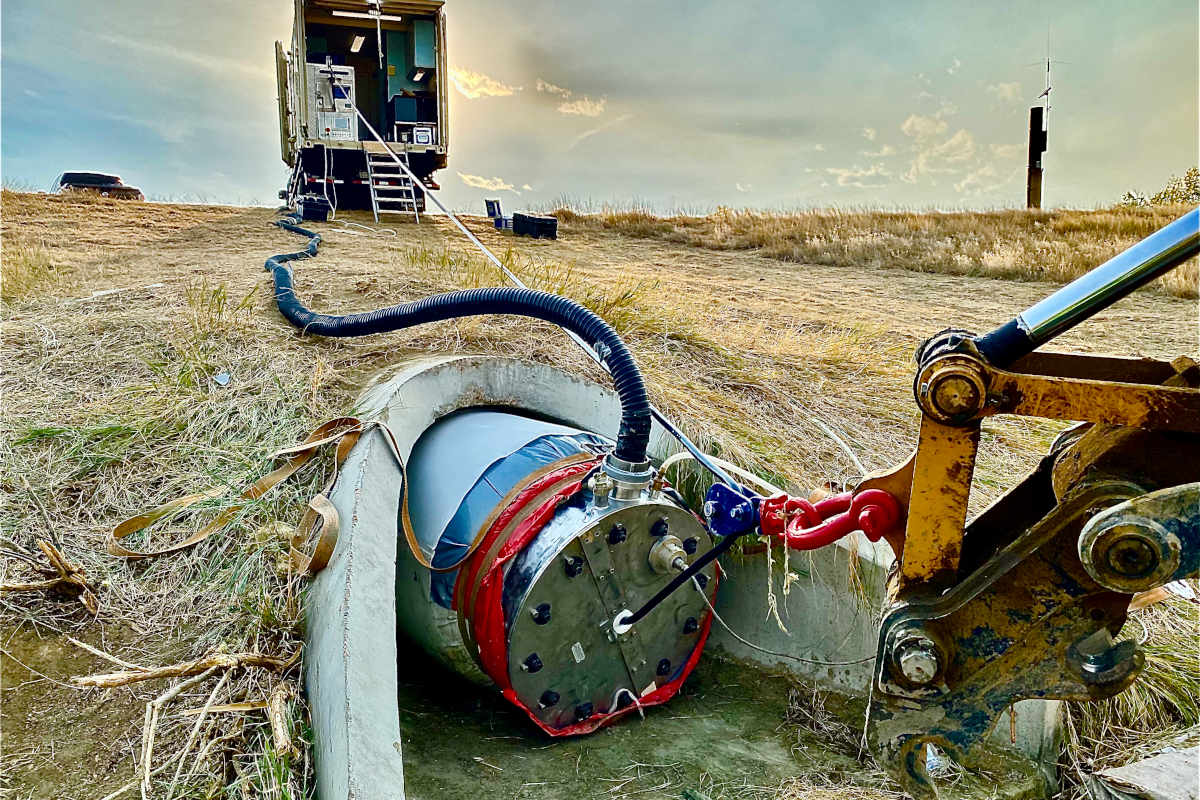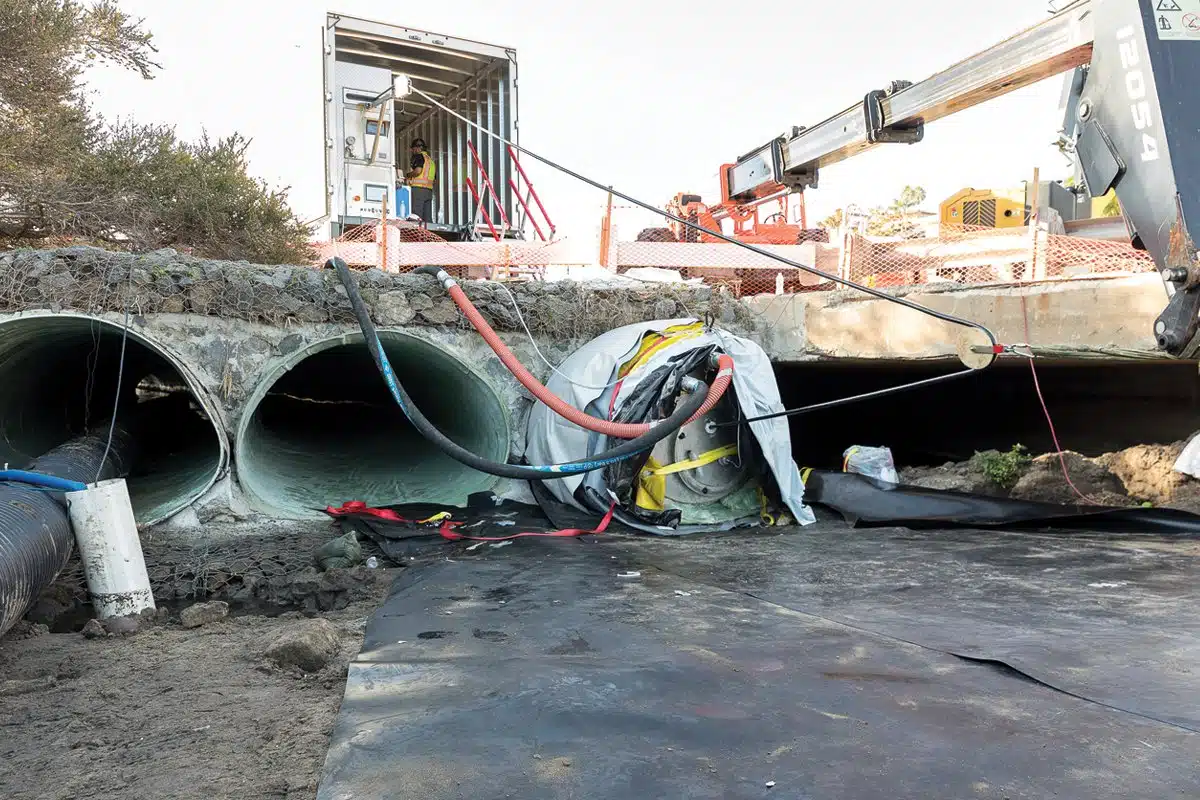
Engineered Lining Systems Relines 29 Storm Water Lines Using UV CIPP at Power Generating Facility
Some cured-in-place (CIPP) projects are pretty routine for crews to complete. Then, there are those that require more planning and intricate execution to get the job done. Such was the case for Jacksonville-Florida-based trenchless specialty contractor Engineered Lining Systems (ELS), when it took on a 4,280-ft Ultra Violet-cured CIPP project at a Southeast steam power generating facility.
The facility, which provides electricity to more than 1 million customers, generates its power via coal, natural, gas, oil and nuclear and cogeneration. ELS was called in to rehabilitate 29 severely deteriorated storm water lines, ranging in diameter from 6 to 36 in. and 140 to 210 ft in length. The lines are located in a retention pond area on the power generating facility’s property. These lines allow the processed water to flow from one side of the retention area into another retention area. The purpose of these lines is to control any infiltration or exfiltration of that water or groundwater that could penetrate the other direction.
The project, which took place in November 2017, required that ELS provide a fully structural solution for the deteriorated pipes that went beyond the industry norm design life of 50 years. “It was a request of the project owner to go above and beyond the strengths of the material and to focus on a 70-year design life,” says ELS production manager James Macko.
RELATED: Relining Culverts with UV-Curing in Popular N.Y. Tourist Spot
The facility’s lines were made of corrugated metal pipe and vitrified clay, which were 30 to 40 years old, and their deteriorated condition was quite extensive, Macko explains. He describes them as having longitudinal, as well as circumferential cracks, in addition to offset joints and pieces of pipe missing.
ELS is a full-service, trenchless technology firm that utilizes a multitude of trenchless methods including UV cured CIPP, pipe bursting, sliplining, pipe grouting, epoxy lining and manhole restoration. For this project, ELS rehabbed the lines with UV-cured glass fiber reinforced plastic (GRP). ELS added UV curing to its repertoire of trenchless methods seven years ago.
The Project Site
The facility’s containment areas cover five to 10 acres on each side of a quarter mile long road way. The retention ponds are about 20 to 25 deep and the water level had to be lowered by the facility prior ELS starting work. “They had to take the water level down to below the invert of the pipe and be low enough so we could work around the pipe,” Macko says.
ELS worked with one of its third-party engineering firms in the region to develop a design to meet the needs of the project. Before any work could be done, the pipes needed to be thoroughly cleaned and inspected. CUES CCTV equipment and GapVax jet vac truck were used for these processes.
Safety of the crewmembers was of utmost importance working in the retention areas, which involved steep slopes surrounded by water. “For this project, we had to work down in the ends of the ponds,” Macko says. “The ponds didn’t have water you had the possibility of slipping, tripping and falls going up and down the sides of the ponds. [Crewmembers] had to have the proper safety equipment to walk up and down the banks of the containment area.”
But it was the hitting the transition spots in the pipe that was the most challenging, mainly due to how many there were — 24 of them, ranging in diameters of 10 to 12 in and 1 of them was even 33 to 36 in. “Because UV GRP liners do not stretch like the inversion liners do, you don’t receive any stretch in the material,” Macko says. “We know that the liner is going to inflate and lock into position, giving us a good mechanical lock at the transitions.”
RELATED: Winning in the Wasatch: Small Trenchless Rehabilitation Project in Utah Yields BIG Results
In dealing with transitions, ELS did hard tape measurements of exactly where these sections of the pipe were in order to ensure the proper size liner was ordered to fit the pipe. ELS used Saetex Multicom liners for the pipe runs with transitions, as well as IMPREG Group liners for the pipe without transitions. “For every liner, we would measure with the camera and tape measure to the transition,” Macko explains. “We would lay our liner on the ground and measure and mark the liner accordingly. When we pulled in, we made sure we hit the mark on the base of the pipe.”
The precision of measuring and installing the liners is critical. “If you don’t put the transition in the right spot, one of two things will happen: 1) You will have too big a liner and too small pipe or 2) You will have too small a liner pulled into too big a pipe,” Macko says.
“We want to make sure I hit that transition spot,” he says. “We are looking at an inch of tolerance. The equipment allows you to visually inspect with a camera the inside of a run before you start curing. If you did have too big a liner in too small a pipe, for example, you can move the liner before you start curing.”
With each pipe, crews had to set up and breakdown the UV-curing equipment; ELS uses ProKASRO UV-curing equipment. That’s 29 times for each for the time-consuming process. “One of the days, we were able to install up to five liners, hitting the transitions on each one, which is very impressive from our perspective,” Macko says.
The project also necessitated a quick schedule of completion of 12 days. ELS finished the project in seven days. “When dealing with a power generation company and knowing they are taking something out of service or bypassing it, the logistics that go into that have a chain reaction and effect everything else they do,” Macko says. “So, once we started hitting certain marks and we saw this trend would continue, we spoke with the owner to show how we could pick up the pace to get the plant back on line sooner.”
RELATED: This California City Built Its Preventative Maintenance Program from Scratch
Macko is proud of the work his team accomplished on this project, particularly how they handled all the transitions. “What made this a highlighted project for us was the amount of transitions and the production we were able to produce in a short amount of time,” he says. “That is what jumps out at us — 29 liners with 25 transitions in seven working days involving nearly 4,300 ft of pipe.”
Sharon M. Bueno is managing editor of Trenchless Technology.




